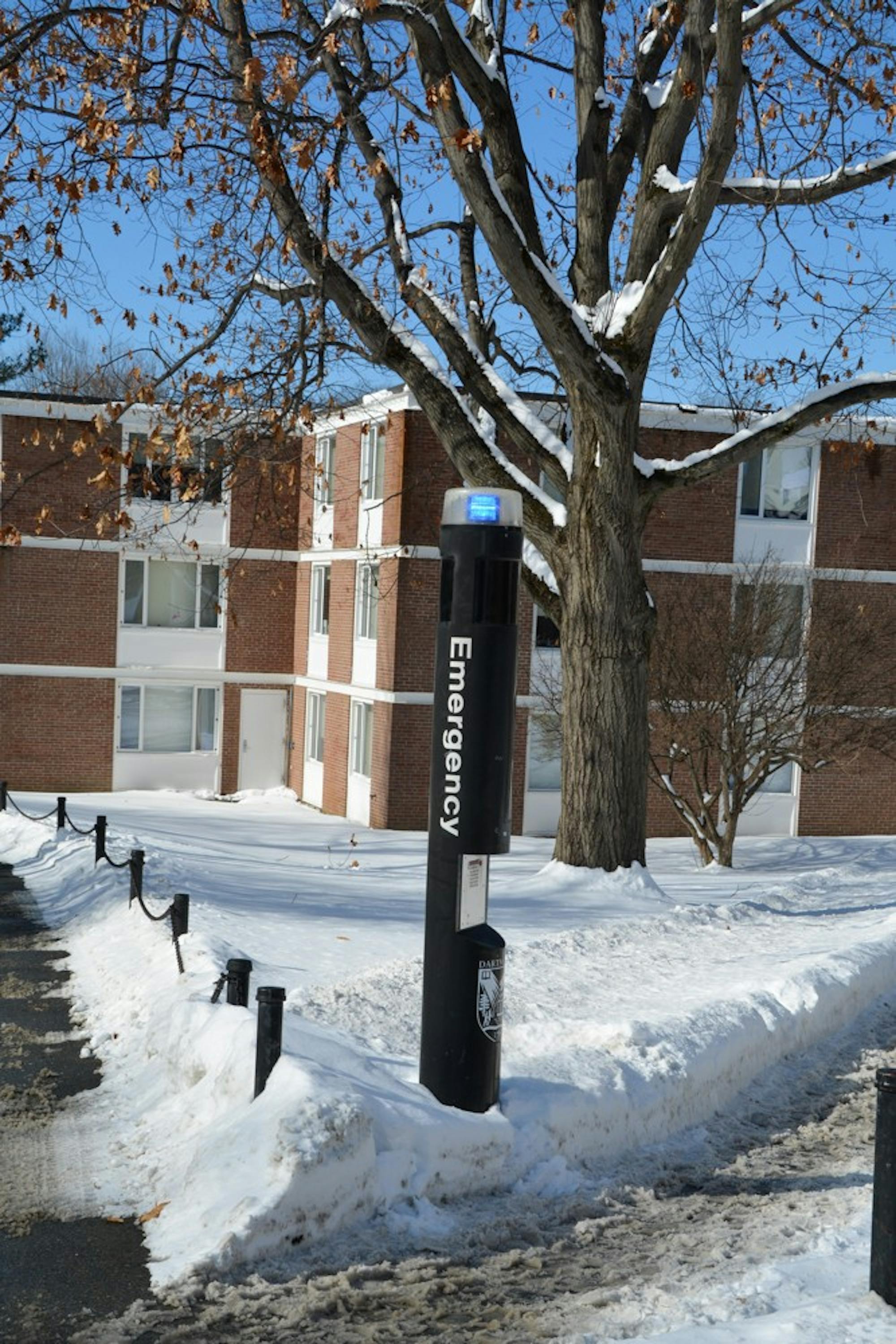Earlier this month, students on campus might have heard sirens and voice recordings as part of Safety and Security’s annual testing of security systems. The College and other organizations on campus have several emergency response systems in place, allowing them to alert students to possible threats and communicate with students in danger.
On Feb. 1, the College tested its multi-modal emergency notification systems, which consists of an outdoor mass notification system and DartAlert, a campus-wide messaging service. Director of Safety and Security Harry Kinne said that the College has these systems in place in order to address “catastrophic situation[s]” posing “imminent harm to the campus.”
Kinne said that Safety and Security tests its outdoor mass notification system once per year. He explained that the system consists of two sirens and speakers located at the edges of campus that play pre-recorded messages alerting students about the type of danger present. The outdoor mass notification system has been in place for approximately five years, he added.
He also said that the DartAlert system also allows Safety and Security officials to electronically communicate with the campus community in the event of an emergency. The system sends Dartmouth community members text and email messages and dials desktop phone systems. Kinne said the DartAlert system is tested twice per year, and that this system has been in place for approximately 10 years.
Safety and Security also uses an Alertus system, Kinne said, which generates pop-up messages on College-maintained computers.
He said that, fortunately, none of the three systems have ever been activated in an emergency situation. Kinne said that the system would be activated in situations such as if an active shooter or a tornado were present on campus.
Kinne stated that Safety and Security also sponsors the use of the LiveSafe mobile application on campus, which was introduced in the fall of 2015 and supports anonymous incident reporting.
Director of university partnerships for LiveSafe Kevin Lombardi said that the LiveSafe app creates a channel of communication between students and security personnel in order to prevent incidents before they occur. The mobile application allows students to anonymously report incidents by text, photo, video or voice note.
The app records the location of an incident when a user makes a report, which allows police or other security personnel to address an incident more accurately. The app’s emergency chat feature also allows users to communicate via text with police or campus security. Lombardi said that this feature could be especially useful when a user feels that picking up the phone could escalate a dangerous situation.
The app’s SafeWalk feature allows a user to let family or friends virtually watch the user walk to their destination.
Lombardi said that this system allows for “crowdsourcing information in real time.”
Though only seven percent of the student body had downloaded the app as of November 2015, Kinne said that he believes that LiveSafe has become more popular due to Dartmouth’s information technology officials efforts to introduce incoming freshmen to the app during Orientation Week.
Lombardi said that 130 universities utilize the app, but this number could grow to 200 by the end of the year. He said that students can adjust the app’s settings if they visit a participating campus, automatically updating the app to communicate with that school’s emergency resources.
Other campus organizations have security measures in place intended to keep the campus community safe. In an email statement, executive director of Dartmouth Emergency Medical Services Lindsay Salem ’18 wrote that her organization has an internal emergency activation system used in the event of a mass casualty incident. The system alerts responders to report to the organization’s office for further instructions. In the event of a mass casualty incident, she explained that Dartmouth EMS might make use of other resources like the Hanover Fire Department or the Lebanon Fire Department depending on that incident’s specific circumstances.




